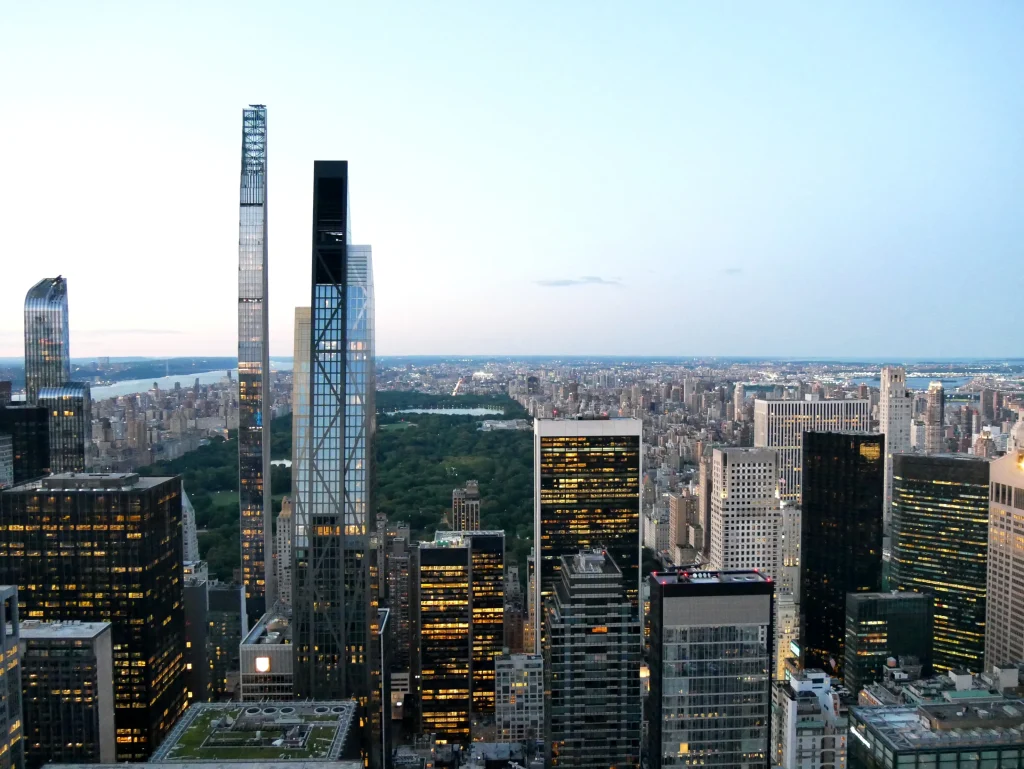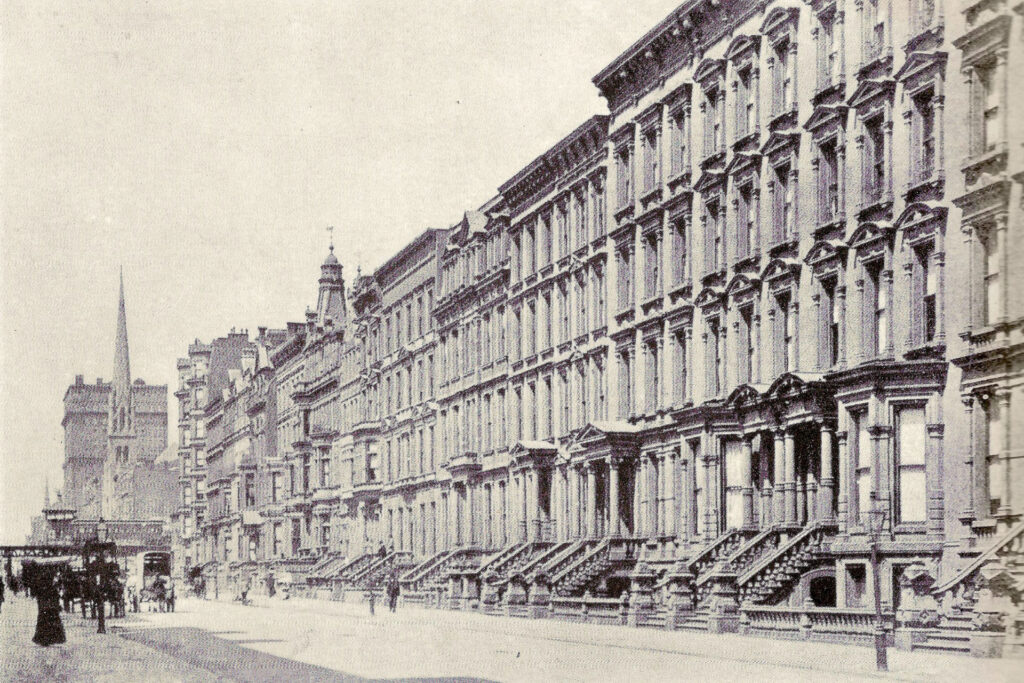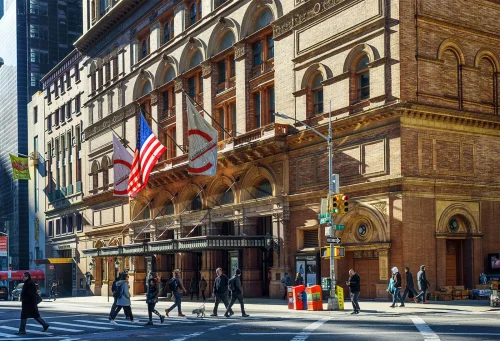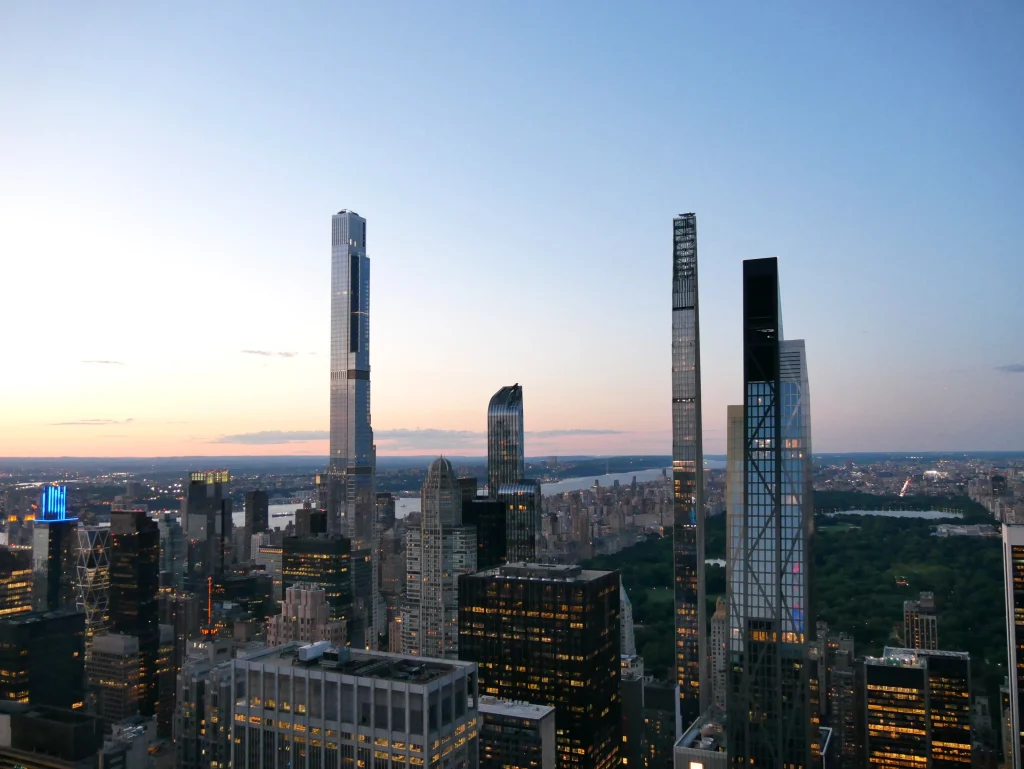
The history of 57th Street in New York City is a captivating journey that spans centuries and reflects the city’s evolution from a colonial settlement to a global metropolis. Here’s a chronological overview of key historical milestones and transformations that have shaped 57th Street into what it is today:
Early Settlement and Development
- In the 18th century, the area now known as 57th Street was mostly undeveloped and included the “Negroes’ Burial Ground,” a cemetery for enslaved and free African Americans.
- The street was originally referred to as “Great Kill Road,” due to a stream that flowed through the area. (“Kill” is a Dutch term that refers to a body of water, such as a creek, river, or stream)
Gilded Age and Millionaires’ Row:

- During the late 19th century’s Gilded Age, 57th Street became a hub of opulence and luxury, earning the nickname “Millionaire’s Row.”
- Astor, Vanderbilt, and other affluent families built lavish mansions along the street, showcasing their wealth and social status.
- These grand homes, characterized by architectural styles such as Beaux-Arts and Neo-Renaissance, contributed to the street’s reputation as a symbol of high society.
Art and Culture Flourish:
- By the early 20th century, 57th Street began to transition into an artistic and cultural hub.
- The Art Students League of New York, founded in 1875, became a focal point for aspiring artists, nurturing talents like Jackson Pollock and Mark Rothko.
- The street’s proximity to Central Park and the evolving art scene attracted creative individuals and institutions, cementing its role in the cultural fabric of the city.
Hall and Music Legacy:

- Carnegie Hall, located at Seventh Avenue and 57th Street, opened its doors in 1891. It quickly became a world-renowned venue for music performances and events.
- The hall’s acoustics and prestigious reputation drew acclaimed musicians, composers, and orchestras from around the globe, solidifying its status as an iconic cultural landmark.
Architectural Evolution and Skyscrapers:
-
- Throughout the 20th century, 57th Street experienced architectural transformations.
- Art Deco and Modernist influences brought about innovative designs, such as the Alwyn Court Apartments (built in 1909) and the Fuller Building (Flatiron Building) on the western end of 57th Street.
- The latter part of the century saw the rise of skyscrapers, with buildings like the Solow Building (9 West 57th Street) and the Time Warner Center (10 Columbus Circle) redefining the street’s skyline.
“Billionaires’ Row” Emerges:

- In recent years, the term “Billionaires’ Row” has been associated with the section of 57th Street near Central Park, known for its luxurious residential skyscrapers catering to the super-wealthy.
- These high-end developments, such as One57 and 432 Park Avenue, have become synonymous with opulence and exclusivity, attracting global attention.
Continued Evolution:
- Today, 57th Street remains a dynamic and ever-changing part of New York City.
- The street’s historical legacy, cultural significance, and architectural diversity continue to shape its identity, drawing residents, visitors, and businesses alike.
